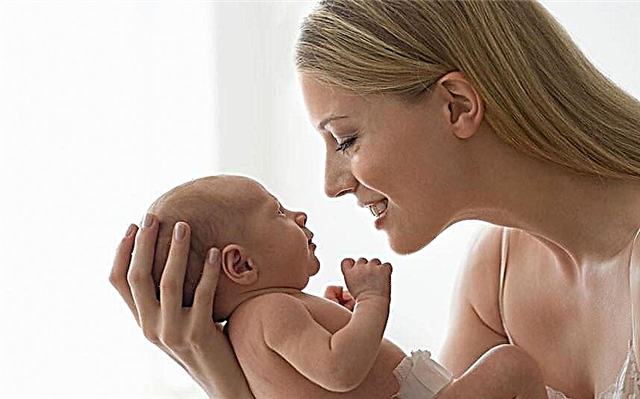
The 17th week of pregnancy does not provide for mandatory ultrasound diagnostics. This is a calm and measured period in which mom feels good. Toxicosis, if it was, is almost over, and the tummy is still small and does not give the woman any unpleasant sensations at all, she does not feel tired. However, the need to do an ultrasound scan may still arise. In this article, we will tell you about how the procedure goes at this time and what can be seen on the scanner monitor.

The purpose of the survey
The first screening was left behind, until the second for about a week and a half.
In some consultations, the first tests of the second screening - a triple or quadruple blood test - may be ordered at 17 full weeks.
At week 17, there can be several reasons that can force a woman to go to an ultrasound diagnostic room, except for banal curiosity (there are such restless women who go for an ultrasound scan to paid clinics almost every two weeks to see how the baby is developing) :
the appearance of pain, bloody, bloody, bloody discharge;
severe toxicosis, edema, increased pressure in the expectant mother;
expert ultrasound (if dubious or alarming signs were revealed during the screening of 11-13 weeks);
clarification of the gestational age, the date of birth, if at the reception at the obstetrician-gynecologist there are doubts (manual examination indicates a discrepancy between the obstetric and real terms, there is a suspicion of a frozen pregnancy).

Preparing and conducting research
The woman's uterus is already large enough, so there is no need for special preparation for the study. The doctor chooses the method of examination according to the situation. If a woman is thin, then this week it is quite possible to carry out the procedure transabdominally by examining the uterine cavity and the baby through the anterior abdominal wall. If the pregnant woman does not differ in thinness, then sometimes it is easier to see the fetus through the wall of the vagina, and then the doctor uses the transvaginal method of examination.
If a woman applies for an ultrasound scan due to discharge and pain, then the study will be carried out only with a vaginal sensor, since there is an urgent need to carefully examine the cervical canal and cervix in order to exclude the likelihood of spontaneous abortion.


The duration of the procedure at this time can vary from 5 to 10 minutes. For the child and the expectant mother, such a diagnosis is considered harmless and painless.
What will show?
At 17 weeks, the baby begins a stormy and important process of bone mineralization, the laying of future milk teeth is taking place in the gums. The formation of the hearing aid has already been completed, and you can already try to see the small ears on the high-resolution ultrasound machine. In female fetuses, at this time, the formation of the main reproductive organ - the uterus - begins. The system of blood vessels is actively developing and branching, but it is not possible to consider this on ultrasound diagnostics.


The doctor and the expectant mother, when carrying out a scan at 17 weeks, will clearly see a fairly grown baby. The size of the fruit is now about 11-12 centimeters, and its weight is over 100 grams. The fact that the child was able to hear will become noticeable during the procedure, because noises from the outside already cause certain reactions in the crumbs. So, the noise of the sensor can force the baby to activate movements, he will begin to quickly move the arms and legs, which also noticeably lengthened.


The diagnostician will carefully examine the condition of the uterus, the young placenta, the formation of which has already been completed, and the amniotic fluid. He will measure the basic parameters of the baby himself, which will allow you to check the timing, as well as judge the pace of development of the child.
If the baby is located conveniently for viewing by the sensor, then the diagnostician will be able to recognize the sex of the child with a high degree of accuracy. Now the fetus is in that very stage of development when it is no longer small, but also not so large that intimate places are covered because of the uncomfortable position of the toddler. Therefore, now is the time to ask the doctor what gender the child will soon become a full member of the family.

Norms and interpretation of results
At week 17, the doctor defines a very standard set of data, which are important in order to understand how a little person feels.
Fetal presentation
At this time, it can be anything - head, pelvic or transverse. The child is not fixed in any position for a long time and almost constantly turns over, taking advantage of the fact that he is still very free in the mother's womb. Therefore, do not worry about pelvic or transverse presentation and possible problems in childbirth associated with this position of the baby. The toddler will change position more than once.

Fetometric indicators
These measurements include the growth indicators of the baby - the longitudinal and transverse dimensions of his head, the circumference of the abdomen, as well as the length of the paired bones. Based on these values, the ultrasound scanner program calculates the estimated weight of the baby, and the doctor, using tables, will establish whether the fetal fetometry values correspond to the norm for his gestational age.


Fetal head and abdomen sizes
Paired bone length
Length of the bones of the nose
A delay of 2 weeks or more from the norms can be regarded by doctors as intrauterine growth retardation, a sign of genetic pathologies or fetal infection. Exceeding the norms can be regarded as an error in calculating the duration of pregnancy, which can be in women with an irregular cycle or with late ovulation.

A slight lagging behind or ahead of the norms cannot be regarded as a pathology, most likely, it is a matter of heredity, because the baby is already developing according to an individual program laid down in him by his parents and nature. Long legs, a "button" nose, a small head may just be features inherited from mom and dad.
The size of the baby's head is important.... If BPD and LHR are 2 weeks or more behind the norm, doctors may prescribe a detailed study, including invasive methods, because such a decrease may be a sign of chromosomal pathologies or microcephaly. An excess of 2 weeks or more is also an alarming sign, which may indirectly indicate the likelihood of hydrocephalus. Slight excess of average standards are regarded as an individual trait of appearance.


Fetal anatomy
At the 17th week of pregnancy, the doctor can assess the profile of the baby, examine his facial bones. The structures of the brain, heart, kidneys, stomach and intestines, lungs and bladder will also be examined. If pathologies are found, geneticists will undertake detailed research, because often congenital malformations of internal organs "coexist" with various syndromes and disorders of the central nervous system.
If all organs are in order, then the doctor will indicate that they "have no peculiarities", "are normal" or simply "examined", he will not describe each in detail.


Placenta and umbilical cord
The baby's nutrition, providing him with oxygen-enriched maternal blood, depends on the state of the "child's place" and the umbilical cord. Normally, the umbilical cord has 3 vessels, which the ultrasound doctor will definitely make an entry in the ultrasound examination protocol.
The normal thickness of the placenta for 17 weeks of gestation is from 15 to 25 mm, the degree of maturity is zero. If the placenta is located close to the internal pharynx, then the doctor will place a low placenta or placenta previa. Both of these conditions are dangerous for the child, and therefore treatment and supportive therapy should be started immediately. If you follow all the recommendations of the obstetrician, there is a fairly good chance that with the subsequent growth of the uterus, stretching of its walls, the placenta will rise.

Uterus, cervix, appendages
Ultrasound at this time assesses not only the size of the female reproductive organ, but also the condition of the walls of the uterus. If a thickening is found, then doctors may suspect hypertonia, which accompanies the threat of termination of pregnancy. Normally, the cervical canal should be closed, the appendages and cervix should not have diagnostic features.

Accuracy
No matter how convenient ultrasound diagnostics is, it is impossible to call it an accurate method. The accuracy of research at this time is estimated at about 85-90%. In matters of gender determination, the accuracy is even lower - about 80%. The doctor can make mistakes due to poor visibility, outdated equipment. When determining the sex of girls, the umbilical cord loops may be confused with the penis, and the boy may be “recorded” as girls because he clamped his “manhood” with his legs and the doctor could not examine it.

The best overview and images are given by 3D ultrasound, and although the procedure is recommended from 20-22 weeks of pregnancy, and at 17 weeks, according to mothers, it was possible to obtain accurate data on the sex of the child, and both doctors and future parents were able to examine intimate places on the received beautiful volumetric shots.



